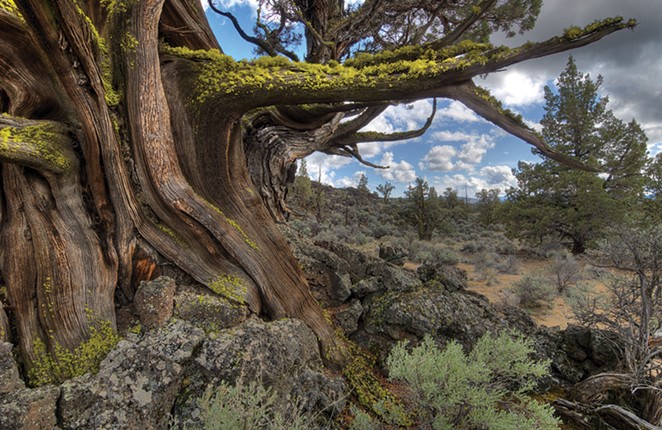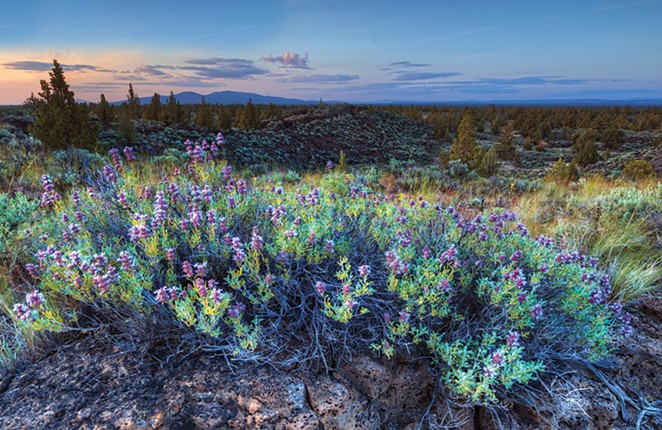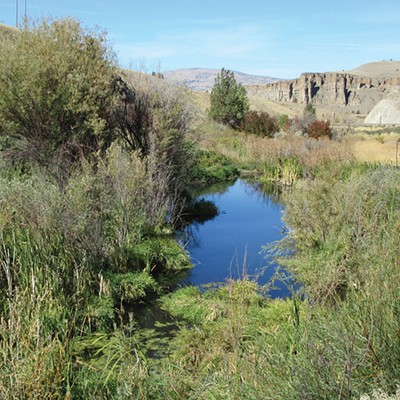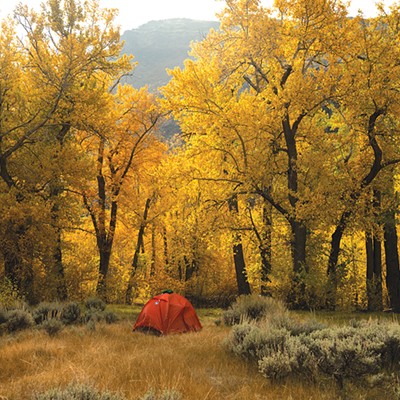The high desert landscape that covers 27.6 million acres of Oregon is packed with opportunities to take profound photos. Photographers can fill a frame with impressive canyons, alkali flats, sagebrush seas, herds of antelope and – if you're lucky – the occasional big horn sheep.

To gather a range of insight on what makes for the best desert photos and what it takes to get them, Oregon Natural Desert Association asked experienced desert photographers and longtime photo contributors Greg Burke and Jim Davis to offer up pointers. Taking a great photograph is a process that starts long before pressing the shutter button.
Preparation
There's a saying, "Your best zoom lens is your two feet." When it comes to desert photography, "scouting" an area can help a photographer really know what to look for and where to find it. Greg Burke resonates with this, sharing, "As a landscape photographer, it takes several trips to the same place to get the right shot." Some things Burke likes to get familiar with are where wildlife tend to roam and eat, the best spots to find rare flora and fauna and where one can get up high to take a vast landscape shot.
Beyond preparing for what goes into their frame, photographers must also anticipate the remote ruggedness that distinguishes the high desert of Oregon.
For example, "Some of the best desert locations are accessed via long unpaved roads which become impassable when wet, even for four-wheel drive vehicles, so you have to watch the weather," says Jim Davis.
Finally, Burke says one of the most important things photographers need to know is their equipment. Familiarize yourself with settings, care and capabilities well before you go out in the field. Photographers should also carry a tripod if they're shooting landscapes or a monopod for wildlife.
Pro Tip: Burke recommends having a camera ready in your car when driving around backroads to campsites or hiking trails. It's a great time to spot wildlife. You'll see them in an instant and having your camera settings ready before you start driving will ensure you're ready when you see the shot.
Composition
Capturing a desert landscape can be more difficult and less forgiving than other ecosystems. With a sea of similar colors in contrast with dark lava rock, the palette you're working with often hinders the image you're trying to capture. To combat this, photo composition is particularly important. The composition of a photo is the differentiation between what a photographer wants to fill their frame with and what they want to exclude, in order to create a more visually appealing image. Visual elements to consider when arranging photo composition are textures, colors, patterns, shapes, tones and contrasts.
Pro Tip: Burke recommends photographers, "Look for color in flowers, sunsets and birds. Look for tonality and gradient of tones in rocks, mountains and landscapes."

Light
Paired with composition, lighting is everything in photography. Good light evokes mood, and the high desert has many moods all day long. To get to know them, shoot in all of them – especially sunset in summer. Generally, the best lighting is a little bit of cloud cover – "but not socked in," says Burke, "just enough to reduce shadows while not overexposing the shot with harsh light."
Pro Tip: Burke recommends that while one wants a bit of cloud cover, they'd best stray away from grey clouds.
Inspiration
One tried-and-true method to improve photography is to study work by the masters. There's endless inspiration in the work of conservation photographers such as Elliot Porter, Ansel Adams and Art Wolfe. "The challenge is to use these elements and apply them to landscapes that are both new to your own eyes and, in many cases, have never had a serious landscape photo taken before," said Davis, in regard to applying the styles of some of his favorite photographers to the scarcely photographed regions of the high desert.
Pro Tip: Davis recommends, "Don't be afraid to emulate the style of a photographer you admire as you shoot. Your own style will evolve."
Practice
Like any expertise, practice is the best way to learn. To become a better photographer, experiment with seasons, times of day and weather conditions. "Thankfully," Burke said, "there really are year-round opportunities to get out and take photos in the Oregon desert."
Looking to put your skills to the test? Each year, Oregon Natural Desert Association's Wild Desert Calendar offers up a dozen stunning landscapes and wildlife shots showing the beauty of the high desert through the seasons. The submission period for the 2024 calendar is now open through June 16. Follow ONDA photographers' advice and you just might see your own image in the next calendar.
—Renee Schiavone is the communications manager at Oregon Natural Desert Association, a nonprofit organization that protects and restores Oregon's high desert public lands and waters. Greg Burke and Jim Davis are longtime volunteers for ONDA, as well as founding members of the organization's Wild Desert Calendar committee. See Greg's photography at pbase.com/gb_photo and explore Jim's photos at flickr.com/photos/desertdustimages/albums.






















